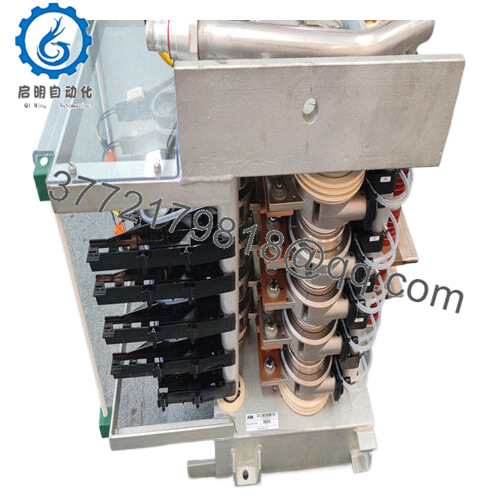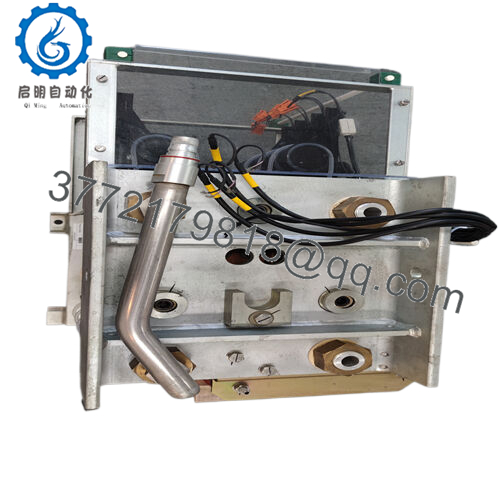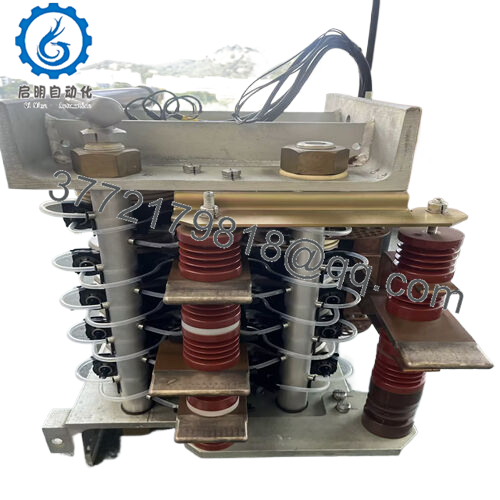Description
| Model Number | 3BHB009884R5211 |
| Brand | ABB |
| Type | High-Performance Digital Control Module (Symphony Plus Compatible) |
| Input Voltage | 24 V DC (from Symphony Plus backplane) |
| Operating Temp Range | -25°C to 75°C (-13°F to 167°F) |
| Mounting Style | Symphony Plus Backplane Mount (2-slot width) |
| Dimensions | 85 mm (W) x 170 mm (H) x 150 mm (D) |
| Weight | 680 g (1.50 lbs) |
| Interface/Bus | ABB Symphony Plus Backplane Bus |
| Compliance | CE, UL 61010-1, IEC 61508 (SIL 3), RoHS |
| Supported Protocols | ABB Secure Connect, PROFINET (via gateway), Modbus TCP |
| Typical Power Draw | 4.5 W (from backplane) |

3BHB009884R5211
The ABB 3BHB009884R5211 functions as a high-performance digital control module in ABB’s industrial automation architecture, specifically engineered for integration with ABB Symphony Plus DCS and compatible control systems. It acts as a bridge between the central DCS and field devices: receiving digital control commands (e.g., “open valve” or “start motor”) from the DCS, processing them with sub-500µs latency, and transmitting validated signals to field actuators—critical for applications requiring near-instantaneous response, such as gas turbine speed regulation.

3BHB009884R5211
Unlike basic control modules, the ABB 3BHB009884R5211 includes dual-core processing for parallel signal handling, enabling it to manage up to 32 digital I/O points without performance degradation. It also features built-in cyber resilience: it encrypts communication with the DCS via ABB’s Secure Connect protocol, protecting against unauthorized access or signal tampering—a growing concern in industrial cybersecurity. The module connects to the Symphony Plus backplane, enabling synchronized data sharing with other system components (e.g., safety modules, HMIs) and supporting hot-swapping: engineers can replace the module without shutting down the DCS, minimizing maintenance-related downtime.

3BHB009884R5211
Main features and advantages:
Choosing the ABB 3BHB009884R5211 delivers measurable operational benefits that reduce risk and streamline engineering workflows. Its ultra-low latency (sub-500µs) ensures that time-critical processes—like semiconductor wafer handling or natural gas pipeline pressure control—operate with pinpoint accuracy, preventing errors such as misaligned wafer placement or overpressurized pipelines that could cost hundreds of thousands of dollars. The module’s rugged design, rated for IP20 dust protection, resistance to vibration (up to 8 g), and tolerance for extreme temperatures (-25°C to 75°C), makes it suitable for harsh environments, from desert-based solar farms to arctic oil refineries, eliminating the need for specialized climate enclosures. Additionally, its native compatibility with ABB Symphony Plus DCS simplifies integration: engineers can configure the module using ABB’s Control Builder Plus software, avoiding the need for third-party tools or extensive retraining. Unlike generic control modules, the ABB 3BHB009884R5211 is certified for SIL 3 safety compliance, making it ideal for safety-critical applications (e.g., emergency shutdown systems) where failures could endanger personnel or the environment.
Application fields:
The ABB 3BHB009884R5211 excels in industries where high-speed, secure digital control is mission-critical. In semiconductor manufacturing, it controls robotic arms that handle delicate wafers, ensuring sub-millimeter positioning accuracy to avoid costly wafer damage (a single damaged wafer can cost $10,000+). In natural gas processing plants, it manages valve actuators in pipeline pressure control systems, responding to pressure fluctuations in under 500µs to prevent pipeline ruptures or gas leaks. It’s also widely used in renewable energy facilities—such as wind farms—where it controls turbine pitch systems, adjusting blade angles in real time to optimize energy output and protect turbines from high winds. In each of these use cases, the ABB 3BHB009884R5211 delivers the speed, reliability, and security needed to maintain operational continuity, while its dual-core processing ensures it can scale with growing system demands.
Related products:
ABB 3BHB009884R5212 – Higher-channel variant (64 digital I/O points) for large-scale control systems (e.g., refineries).
ABB 3BHB009885R5201 – Analog/digital combo module; adds 16 analog input channels for mixed-signal applications (e.g., temperature + on/off control).
ABB 3BHB009884R5201 – Lower-latency variant (sub-300µs) for ultra-critical applications (e.g., nuclear power plant control).
ABB 3BHB007654R0001 – Redundancy module; enables 1+1 redundancy for ABB 3BHB009884R5211 in safety-critical setups.
ABB 3BHB009886R5201 – Wireless-enabled variant; supports Wi-Fi 6 for remote field devices (e.g., offshore platforms).
Installation and maintenance:
Before installing the ABB 3BHB009884R5211, verify that the Symphony Plus backplane has two adjacent available slots and that the DCS firmware is updated to version 8.1 or later—older firmware may not support the module’s dual-core processing or Secure Connect protocol. Check that field device wiring is rated for 24 V DC (22 AWG minimum) and that wiring distances do not exceed 100 meters (to avoid signal degradation). During installation, ensure the module is seated firmly in the backplane to maintain a reliable bus connection; loose connections can cause intermittent signal loss. For ongoing maintenance, review DCS diagnostic logs biweekly to monitor module temperature, I/O point status, and communication latency—address any anomalies (e.g., latency spikes above 500µs) immediately. Every 3 years, perform a cybersecurity audit to validate Secure Connect encryption settings and update firmware to patch potential vulnerabilities. every year,conduct a functional test by simulating control commands (e.g., “close valve”) and verifying that field devices respond within the module’s rated latency.
Other ABB product models:
ABB 3BHE030579R0003
ABB 1SVR040000R1700
ABB UAD155A0111 3BHE029110R0111
ABB 1TGE120040R0010
ABB DCF506-0140-51-0000000
ABB PCD530
ABB 1TGE120016R0104
ABB 1MRK000614-AB
ABB 5SHY35L4510
ABB PYT0450W071A
ABB DKTFM418B 3BHB015651P0001
ABB REF620E-1G NBFNAANNNEA1BNF11G
ABB PM858K02 3BSE082896R1
ABB PM902F 3BDH001000R0001
ABB KSD211B101 3BHE022455R1101
ABB PM863K02 3BSE088382R1
ABB SM812K01 3BSE072270R1
ABB UNS0867 HIEE405246R0002
ABB El3020 URAS26
ABB PM803F
ABB REF601BE446BD1NH
ABB 3BHE022287R0001
ABB PFTL101A-2.0KN 3BSE004172R1
ABB PTPU-02 3HNA023148-001
ABB UNITROL1020
ABB 3HAC028357-001
ABB 3BSE003832R1 SC510
ABB LM200
ABB SPAJ110C
ABB 1KHL178016R0001F
ABB 1KHL160038R0104D
ABB UP10C01000
ABB LD800HSE 3BDH000320R02
ABB 5SHY35L4520 5SXE10-0181
ABB VP01 2VAA008172R01

 WhatsApp: +86 16626708626
WhatsApp: +86 16626708626 Email:
Email:  Phone: +86 16626708626
Phone: +86 16626708626


